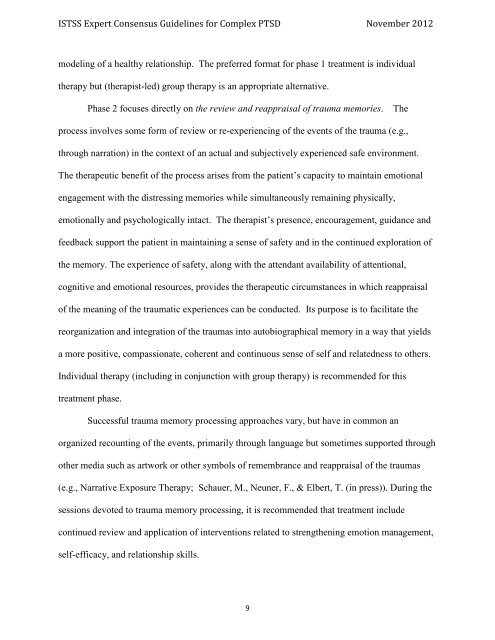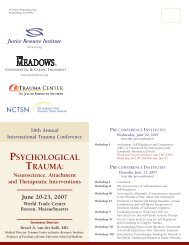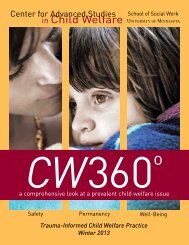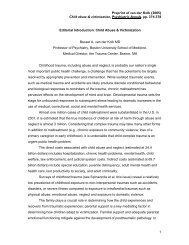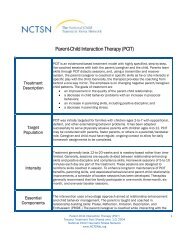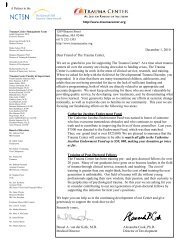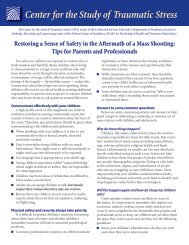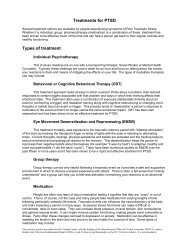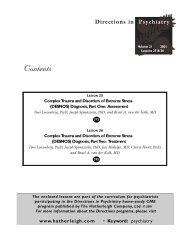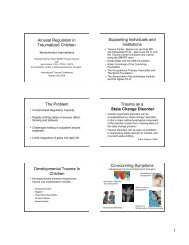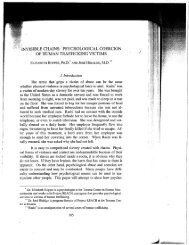ISTSS Expert Consensus Treatment Guidelines for Complex PTSD
ISTSS Expert Consensus Treatment Guidelines for Complex PTSD
ISTSS Expert Consensus Treatment Guidelines for Complex PTSD
You also want an ePaper? Increase the reach of your titles
YUMPU automatically turns print PDFs into web optimized ePapers that Google loves.
<strong>ISTSS</strong> <strong>Expert</strong> <strong>Consensus</strong> <strong>Guidelines</strong> <strong>for</strong> <strong>Complex</strong> <strong>PTSD</strong> November 2012<br />
modeling of a healthy relationship. The preferred <strong>for</strong>mat <strong>for</strong> phase 1 treatment is individual<br />
therapy but (therapist-led) group therapy is an appropriate alternative.<br />
Phase 2 focuses directly on the review and reappraisal of trauma memories. The<br />
process involves some <strong>for</strong>m of review or re-experiencing of the events of the trauma (e.g.,<br />
through narration) in the context of an actual and subjectively experienced safe environment.<br />
The therapeutic benefit of the process arises from the patient’s capacity to maintain emotional<br />
engagement with the distressing memories while simultaneously remaining physically,<br />
emotionally and psychologically intact. The therapist’s presence, encouragement, guidance and<br />
feedback support the patient in maintaining a sense of safety and in the continued exploration of<br />
the memory. The experience of safety, along with the attendant availability of attentional,<br />
cognitive and emotional resources, provides the therapeutic circumstances in which reappraisal<br />
of the meaning of the traumatic experiences can be conducted. Its purpose is to facilitate the<br />
reorganization and integration of the traumas into autobiographical memory in a way that yields<br />
a more positive, compassionate, coherent and continuous sense of self and relatedness to others.<br />
Individual therapy (including in conjunction with group therapy) is recommended <strong>for</strong> this<br />
treatment phase.<br />
Successful trauma memory processing approaches vary, but have in common an<br />
organized recounting of the events, primarily through language but sometimes supported through<br />
other media such as artwork or other symbols of remembrance and reappraisal of the traumas<br />
(e.g., Narrative Exposure Therapy; Schauer, M., Neuner, F., & Elbert, T. (in press)). During the<br />
sessions devoted to trauma memory processing, it is recommended that treatment include<br />
continued review and application of interventions related to strengthening emotion management,<br />
self-efficacy, and relationship skills.<br />
9


